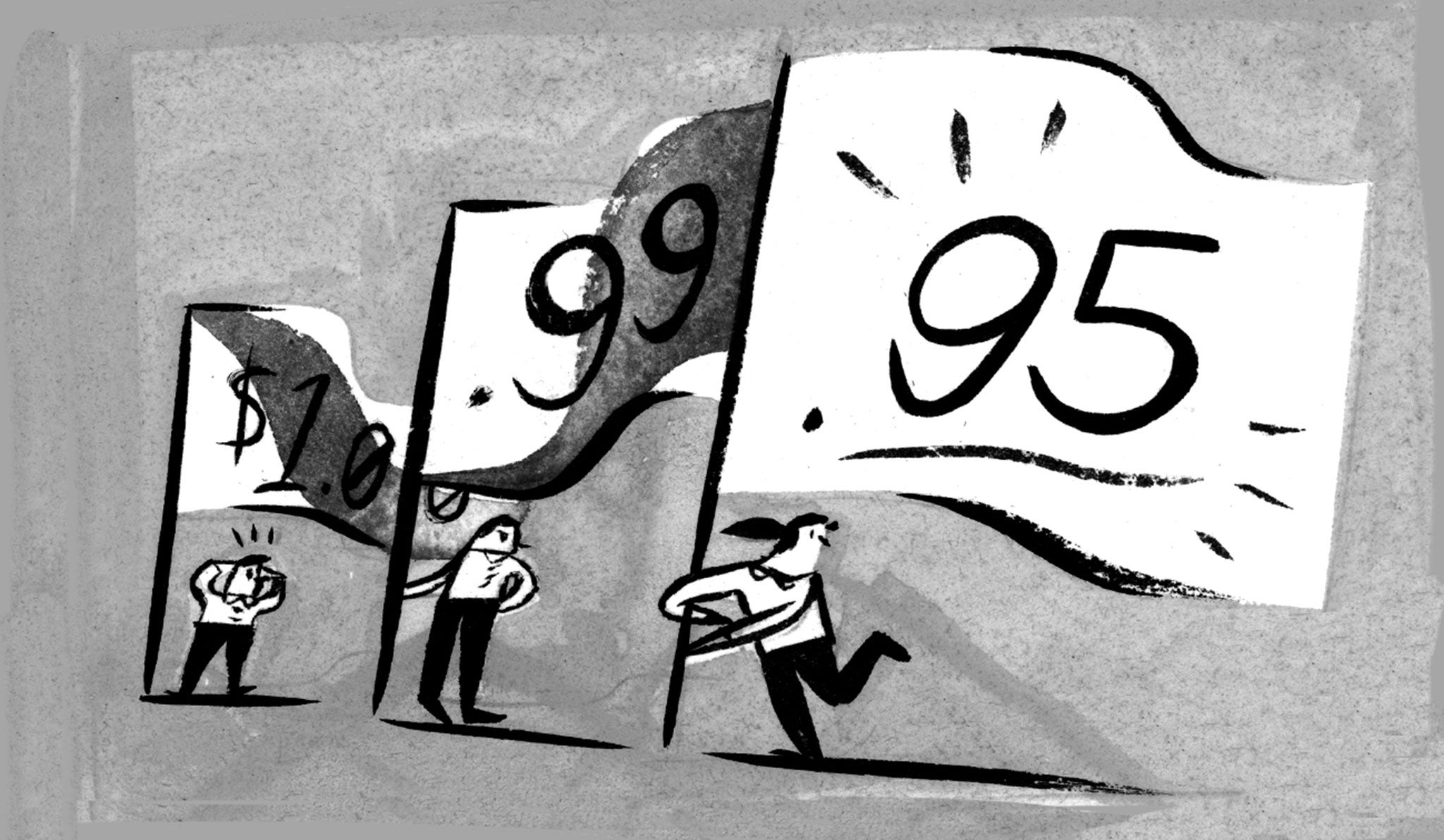Let me ask you this: 'Do prices at .99, instead of 1.00, result in more sales?'

Actually, the .99 price point was a very early form of loss prevention, inventory control, and accounting.
There was a fear that pricing something at 1.00 would result in the cashier pocketing the money, whereas a .99 item would mean that he would have to open the register and give a penny in change. Not a lot of registers printed receipts back then.
You can also check the amount of items based on the day's take, using simple maths.
Example: if the total till take ended in .56, it means that 44 (or 144) items were sold, regardless of the amount of customers.
That price point stuck, but it was really helpful to run a business efficiently.
Frederick Arciniegas
This is called psychological pricing and has been studied a lot by the marketers.
There are three different theories of its history:
1. Marketers of mid-1800s tried to ambush their competitors in highly price-sensitive goods.
2. Melville Stone of the Chicago Daily News priced his paper at one cent. However, given that cents were not in common use then, he coaxed local shops into odd pricing so that his customers would have the pennies to spend on his paper.
3. As Frederick Arciniegas suggested, it was a cash-control mechanism due to the arrival of the cash register.
Why do they continue to do odd pricing? Customers see odd numbers as correctly priced rather than whole numbers. They tend to think that a rational process is involved in the pricing and go with the pricing.
On the other hand, with whole pricing, some customers perceive that they are being gouged.
Odd pricing also sends a psychological cue that the item is priced to the lowest possible.
In the earlier days, competitors in commodity products tried to gain more market share by pricing a penny or two lower than their competitors.
Various researches indicate that customers are swayed more by the most significant first digits of a price tag and sometimes by the last digit. In one research done in 1997, they found that 90 per cent of the prices end with either nine or five.
However, as customers are subconsciously getting used to these odd prices, other companies, such as Walmart, favour more pricing ending with .98 to stay out of the crowd.
Balaji Viswanathan, product manager
These answers all come from quora.com, the popular online Q&A service. Ask any question and get real answers from people in the know
Subscribe to Independent Premium to bookmark this article
Want to bookmark your favourite articles and stories to read or reference later? Start your Independent Premium subscription today.

Join our commenting forum
Join thought-provoking conversations, follow other Independent readers and see their replies